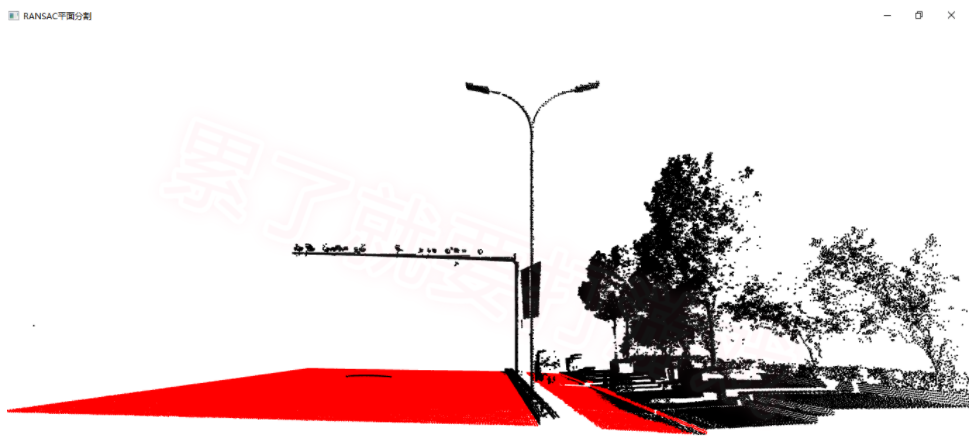SLAM本质剖析-Open3D
【摘要】 0. 前言在深入剖析了Ceres、Eigen、Sophus、G2O后,以V-SLAM为代表的计算方式基本已经全部讲完。就L-SLAM而言,本系列也讲述了PCL、与GTSAM点云计算部分。之前的系列部分作者本以为已经基本讲完,但是近期突然发现还有关于Open3D的部分还没有写。趁着这次不全来形成一整个系列,方便自己回顾以及后面的人一起学习。 1. Open3D环境安装这里将Open3D的环境...
0. 前言
在深入剖析了Ceres、Eigen、Sophus、G2O后,以V-SLAM为代表的计算方式基本已经全部讲完。就L-SLAM而言,本系列也讲述了PCL、与GTSAM点云计算部分。之前的系列部分作者本以为已经基本讲完,但是近期突然发现还有关于Open3D的部分还没有写。趁着这次不全来形成一整个系列,方便自己回顾以及后面的人一起学习。
1. Open3D环境安装
这里将Open3D的环境安装分为两个部分:非ROS和ROS环境
非ROS环境
//下载源码
git clone git@github.com:intel-isl/Open3D.git
git submodule update --init --recursive
//安装依赖
cd open3d
util/scripts/install-deps-ubuntu.sh
//编译安装
mkdir build
cd build
sudo cmake -DCMAKE_INSTALL_PREFIX=/opt/Open3D/ -DBUILD_EIGEN3=ON -DBUILD_GLEW=ON -DBUILD_GLFW=ON -DBUILD_JSONCPP=ON -DBUILD_PNG=ON -DPYTHON_EXECUTABLE=/usr/bin/python ..
sudo make -j8
sudo make install
ROS环境
//更新cmake
sudo apt-add-repository 'deb https://apt.kitware.com/ubuntu/ bionic main'
sudo apt-get update
sudo apt-get install cmake
//安装Open3D
git clone --recursive https://github.com/intel-isl/Open3D
cd Open3D && source util/scripts/install-deps-ubuntu.sh
mkdir build && cd build
cmake -DBUILD_EIGEN3=ON -DBUILD_GLEW=ON -DBUILD_GLFW=ON -DBUILD_JSONCPP=ON -DBUILD_PNG=ON -DGLIBCXX_USE_CXX11_ABI=ON -DPYTHON_EXECUTABLE=/usr/bin/python -DBUILD_UNIT_TESTS=ON ..
make -j4
sudo make install
//基于Open3D的ros程序
mkdir -p catkin_ws/src
cd catkin_ws/src
git clone git@github.com:unr-arl/open3d_ros.git
cd ..
catkin config -DCMAKE_BUILD_TYPE=Release
catkin build open3d_ros
2. Open3D示例
Open3D的操作和PCL类似,都是利用源码读取ply点云后, 并做ransec平面分割的操作。
//Open3D
#include "Open3D/Open3D.h"
//Eigen
#include "Eigen/Dense"
/* RANSAC平面分割 */
void testOpen3D::pcPlaneRANSAC(const QString &pcPath)
{
int width = 700, height = 500;
auto cloud_ptr = std::make_shared<open3d::geometry::PointCloud>();
if (!open3d::io::ReadPointCloud(pcPath.toStdString(), *cloud_ptr)) { return; }
open3d::visualization::DrawGeometries({ cloud_ptr }, "Point Cloud 1", width, height);
/***** 距离阈值,平面最小点数,最大迭代次数。返回平面参数和内点 *****/
double tDis = 0.05;
int minNum = 3;
int numIter = 100;
std::tuple<Eigen::Vector4d, std::vector<size_t>> vRes = cloud_ptr->SegmentPlane(tDis, minNum, numIter);
//ABCD
Eigen::Vector4d para = std::get<0>(vRes);
//内点索引
std::vector<size_t> selectedIndex = std::get<1>(vRes);
//内点赋红色
std::shared_ptr<open3d::geometry::PointCloud> inPC = cloud_ptr->SelectByIndex(selectedIndex, false);
const Eigen::Vector3d colorIn = { 255,0,0 };
inPC->PaintUniformColor(colorIn);
//外点赋黑色
std::shared_ptr<open3d::geometry::PointCloud> outPC = cloud_ptr->SelectByIndex(selectedIndex, true);
const Eigen::Vector3d colorOut = { 0,0,0 };
outPC->PaintUniformColor(colorOut);
//显示
open3d::visualization::DrawGeometries({ inPC,outPC }, "RANSAC平面分割", width, height);
}

对于Open3D而言,PCL可以做到的,其自身也可以做到,下面部分代码为Open3D的ICP匹配
#include <opencv2/opencv.hpp>
#include <iostream>
#include <Eigen/Dense>
#include <iostream>
#include <memory>
#include "Open3D/Registration/GlobalOptimization.h"
#include "Open3D/Registration/PoseGraph.h"
#include "Open3D/Registration/ColoredICP.h"
#include "Open3D/Open3D.h"
#include "Open3D/Registration/FastGlobalRegistration.h"
using namespace open3d;
using namespace std;
using namespace registration;
using namespace geometry;
using namespace cv;
void main()
{
open3d::geometry::PointCloud source, target;
open3d::io::ReadPointCloud("C:/Users/chili1080/Desktop/Augmented ICL-NUIM Dataset-jyx/livingroom1-fragments-ply/cloud_bin_0.ply", source);
open3d::io::ReadPointCloud("C:/Users/chili1080/Desktop/Augmented ICL-NUIM Dataset-jyx/livingroom1-fragments-ply/cloud_bin_1.ply", target);
Eigen::Vector3d color_source(1, 0.706, 0);
Eigen::Vector3d color_target(0, 0.651, 0.929);
source.PaintUniformColor(color_source);
target.PaintUniformColor(color_target);
double th = 0.02;
open3d::registration::RegistrationResult res = open3d::registration::RegistrationICP(source, target, th, Eigen::Matrix4d::Identity(),
TransformationEstimationPointToPoint(false), ICPConvergenceCriteria(1e-6, 1e-6, 300));
//显示配准结果 fitness 算法对这次配准的打分
//inlier_rmse 表示的是 root of covariance, 也就是所有匹配点之间的距离的总和除以所有点的数量的平方根
//correspondence_size 代表配准后吻合的点云的数量
cout << "fitness: "<<res.fitness_<<" inlier rmse:"<<res.inlier_rmse_<<" correspondence_set size:"<<res.correspondence_set_.size()<<endl;
cout << "done here";
}

…详情请参照古月居
【声明】本内容来自华为云开发者社区博主,不代表华为云及华为云开发者社区的观点和立场。转载时必须标注文章的来源(华为云社区)、文章链接、文章作者等基本信息,否则作者和本社区有权追究责任。如果您发现本社区中有涉嫌抄袭的内容,欢迎发送邮件进行举报,并提供相关证据,一经查实,本社区将立刻删除涉嫌侵权内容,举报邮箱:
cloudbbs@huaweicloud.com
- 点赞
- 收藏
- 关注作者


评论(0)